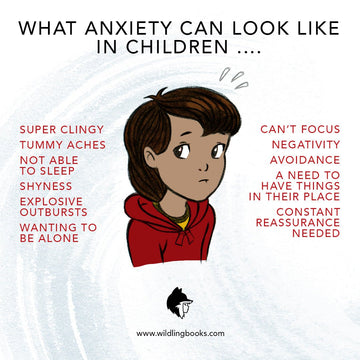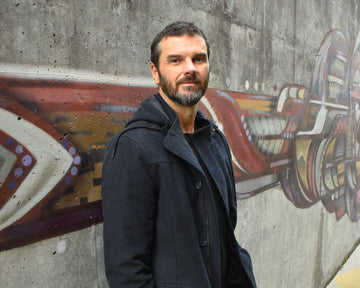
When I look back as a child, I had no idea that it could be anxiety that was triggering my behaviour. I was a very full-on child. It can present itself in so many different ways in children so it can be difficult to uncover at first. Especially decades ago. My parents were told that I needed to 'toughen up' ... today's equivalent could be ... 'need to be more resilient', and were offered no help. Thankfully things have changed and we are more open to talking about how we feel and building emotional literacy with our children.
I would explode over what seemed to be very little, like having to wear a certain article of clothing. Looking back as an adult now, I realise that my behaviour was indicating my stress over things outside of my control and would just overflow at times over things that seemed trivial. For example, we moved houses a lot and I changed primary schools six times. These are all very unsettling and out of my control as a child and could have increased my levels of anxiety. Not to mention that I was generally a highly sensitive child (that's a whole new blog!).
Anxiety is a normal response that our bodies experience when exposed to stress. Everyone will experience anxiety at some point in their life. Sometimes anxiety is helpful by focusing our attention in order to get something done well. However, when anxiety is there all the time, it can become really overwhelming and debilitating.
Learning to recognise anxiety and how to manage it early can be so helpful. Here are just some things to look out for in children:
- Super clingy
- Tummy aches
- Not able to sleep
- Explosive outbursts
- Wanting to be alone
- Can't focus
- Negativity
- Avoidance
- A need to have things in their place or a certain order
- Constant reassurance needed
Obviously, this doesn't include everything, as each child is different. Remember, that a child's behaviour is them trying to communicate because they are not yet able to articulate their feelings well.
Let's meet them with compassion and love. As adults, we need to show them ways to express themselves that are safe for them, and others around them. And let's also remember to talk with our kids, once they are calm, and work out what is really going on. Then you can work out ways together to help them.
In our book, Aroha's Way, we show children that feelings like worrying thoughts, apprehension, nervousness and fear are normal and that there are ways you can help manage those uncomfortable emotions when they rise up.
Diaphragmatic breathing or belly breathing is a fabulous tool to teach your children when they are little as it can be used for the rest of their lives. As so many of us live in a constant state of stress, belly breathing is a great way to reset our bodies and minds back to a place of calm.
Download our FREE belly breathing poster HERE!
Bex x
PS. If you are concerned about your child's behaviour then we always suggest seeking expert medical help from your doctor, a psychologist or counsellor. Never be ashamed or worried about reaching out for help.





